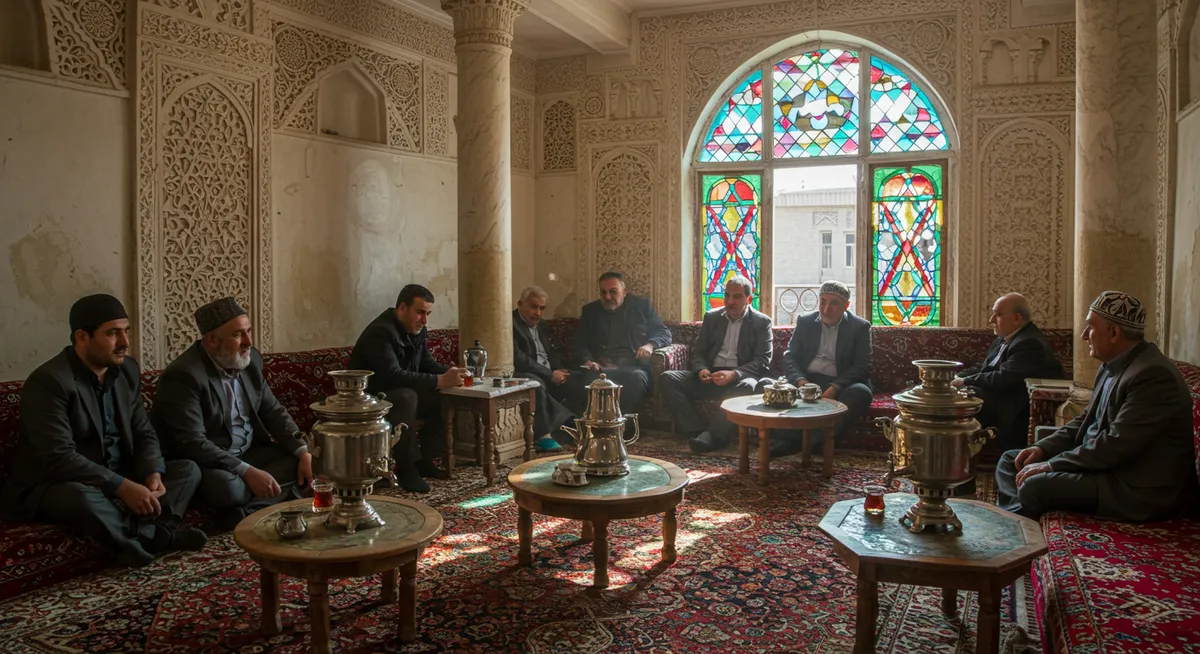
Traditional Dushanbe Tea Houses Culture: A Deep Dive
Table of Contents
Want to find the best travel deals for this destination? Chat with our travel hacking specialist!
Get Travel HacksCategory: traditional-dushanbe-tea-houses-culture
Discovering the Heart of Tajik Hospitality: Traditional Dushanbe Tea Houses Culture
Having explored Central Asia extensively, I can confidently say that few experiences offer as authentic a glimpse into local life as stepping inside a traditional tea house. In Dushanbe, the capital of Tajikistan, the traditional Dushanbe tea houses culture is not just about a beverage; it's the very heartbeat of social interaction, a place where generations gather, stories unfold, and hospitality flourishes. As a seasoned travel content creator with a passion for deep cultural immersion, I’m excited to guide you through the intricate world of Dushanbe's cherished chaikhanas. Enhance your Dushanbe experience with our Dushanbe nightlife guide. Enhance your Dushanbe experience with our Dushanbe itinerary.
The Enduring Legacy of Dushanbe's Chaikhanas
Known locally as chaikhanas, these traditional Dushanbe tea houses are far more than just eateries; they are centuries-old institutions that serve as community hubs. Historically, they provided respite for travelers along the Silk Road, evolving into vital social centers for discussions, business, and leisure. The architecture often reflects elaborate Tajik craftsmanship, featuring intricate wood carvings, vibrant mosaics, and expansive courtyards. Stepping into a chaikhana is like entering a tranquil oasis, a stark contrast to the city's bustling streets. My first time, I was struck by the immediate sense of calm and camaraderie that pervades these spaces. For discovering unique aspects of the city, explore Dushanbe's hidden gems. Immerse yourself in local culture with our Dushanbe cultural guide.
The Art of Tajik Tea Drinking Etiquette
Tea, or chai, is central to Tajik hospitality, and the ritual of serving it is an art form. While both green (chai sabz) and black (chai siyoh) tea are available, green tea is overwhelmingly preferred and believed to aid digestion in hot climates. Tea is typically served in small, handle-less bowls called pialas. An important etiquette tip: hosts will often pour only a small amount of tea at a time. This isn't scarcity; it’s a gesture of constant attention, ensuring your tea remains hot and fresh. Always accept an offer of tea – it's a sign of respect. To truly embrace the local way, learn how to experience Dushanbe like a local, starting with these customs. Find hidden treasures with our Dushanbe hidden gems.
More Than Just Chai: Culinary Delights and Community
While tea is the star, traditional Dushanbe tea houses also offer a surprisingly rich culinary experience. You'll often find a menu of simple yet hearty Tajik dishes. Staples like samsa (savory pastries), various types of shurbo (soup), and of course, the ubiquitous plov (rice pilaf) are common. These establishments are gathering places where families and friends celebrate, discuss daily life, and simply enjoy each other's company. I once shared a table with a group of elderly men, their laughter filling the air – a testament to the community spirit. For more such experiences, consider other unique things to do in Dushanbe, Tajikistan.
Navigating Dushanbe's Authentic Tea House Scene
Finding an authentic chaikhana means looking beyond the main tourist routes. Many of the most beloved traditional Dushanbe tea houses are tucked away in quiet neighborhoods or unassuming alleys. Look for places where you see a mix of generations, particularly elders, and where locals are engaged in lively conversation. These establishments often have a humble exterior but possess an undeniable warmth within. Don't be afraid to ask locals for recommendations; they'll be delighted to guide you to their favorite spots. Visiting these establishments is truly a way to get Dushanbe off the beaten path.
Embracing the Tranquil Pace of Tajik Tea Culture
To fully appreciate the traditional Dushanbe tea houses culture, you must adopt the local pace. This isn't a place for quick coffee runs; it's an invitation to slow down, observe, and connect. Sit on the cushioned platforms (tapchans), listen to the murmur of conversations, and simply let the tranquility wash over you. Engage with the staff, even if just with a smile and a few words of Tajik (like 'Salom' for hello or 'Rakhmat' for thank you). It's an opportunity to truly immerse yourself in the everyday rhythm of Tajik life and appreciate the profound role tea plays. For broader travel insights, visit secretlocale.com.
Frequently Asked Questions
What is a chaikhana?
What kind of tea is usually served in Dushanbe tea houses?
Is it appropriate for women to visit Dushanbe tea houses?
The traditional Dushanbe tea houses culture offers an unparalleled window into the soul of Tajikistan. These aren't just places to drink tea; they are vibrant repositories of history, community, and the timeless art of hospitality. From the calming aroma of green tea to the lively chatter of locals, every moment spent in a chaikhana is an opportunity for authentic cultural immersion. So, on your next visit to Dushanbe, seek out these cherished institutions. Sit, sip, and truly connect with the heart of Tajik life. Your journey will be richer for it.